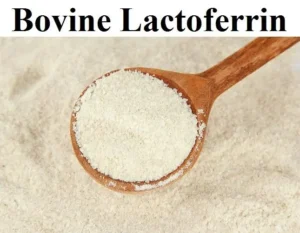9 Foods to Help You Lose Weight

Foods
9 Foods to Help You Lose Weight
1. Beans as Foods
Inexpensive, filling, and versatile, beans are a great source of protein. Beans are also high in fiber and slow to digest. That means you feel full longer, which may stop you from eating more Foods
2. Soup
Start a meal with a cup of soup, and you may end up eating less. It doesn’t matter if the soup is chunky or pureed, as long as it’s broth-based. You want to keep the soup to 100 to 150 calories a serving. So skip the dollops of cream and butter.
3. Dark Chocolate
Want to enjoy a little bit of chocolate between meals? Pick a small square or two of dark chocolate instead of the milky version. In one study, chocolate lovers who were given dark chocolate ate 15% less pizza a few hours later than those who had eaten milk chocolate.
4. Pureed Vegetables
You can add more veggies to your diet, enjoy your “cheat” foods, and cut back on the calories you’re eating, all at the same time. When Penn State researchers added pureed cauliflower and zucchini to mac and cheese, people seemed to like the dish just as much. But they ate 200 to 350 fewer calories. Those healthy vegetables added low-cal bulk to the tasty dish.
5. Yogurt with berries
A protein-rich breakfast may help you resist snack attacks throughout the day.
In a study of a group of obese young women, those who started the day with 35 grams of protein — that’s probably way more than you’re eating — felt fuller right away. The women ate a 350-calorie breakfast that included eggs and a beef sausage patty. The effect of the high-protein breakfast seemed to last into the evening, when the women munched less on fatty, sugary goods than the women who had cereal for breakfast.
Eggs and sausage aren’t your only options – and given their saturated fat, you might need to switch things up. Greek yogurt with berries and nuts is one option. Just pick yogurt that isn’t loaded with added sugar.
6. Nuts
For a great snack on the run, take a small handful of any nuts — such as almonds, peanuts, walnuts, or pecans. Research shows that when people munch on nuts, they automatically eat less at later meals.
7. Apples (With the Skin On)
Skip the apple juice and the applesauce and opt instead for a crunchy apple with its skin on. Whole fruit blunts appetite in a way that fruit juices and sauces don’t.
One reason is that raw fruit has more fiber. Plus, chewing sends signals to your brain that you’ve eaten something substantial.
8. Yogurt
Whether you prefer Greek or traditional, yogurt can be good for your waistline.
A Harvard study followed more than 120,000 people for a decade or longer. Yogurt, of all the foods that were tracked, was most closely linked to weight loss.
That doesn’t prove that yogurt caused weight loss, but it stood out among other foods.
9. Grapefruit
Yes, grapefruit really can help you shed pounds, especially if you are at risk for diabetes.
Dried fruit is fruit from which the majority of the original water content has been removed either naturally, through sun drying, or through the use of specialized dryers or dehydrators. Dried fruit has a long tradition of use dating back to the fourth millennium BC in Mesopotamia, and is prized because of its sweet taste, nutritive value, and long shelf life.
Today, dried fruit consumption is widespread. Nearly half of the dried fruits sold are raisins, followed by dates, prunes, figs, apricots, peaches, apples, and pears. These are referred to as “conventional” or “traditional” dried fruits: fruits that have been dried in the sun or in heated wind tunnel dryers. Many fruits such as cranberries, blueberries, cherries, strawberries, and mango are infused with a sweetener (e.g. sucrose syrup) prior to drying. Some products sold as dried fruit, like papaya, kiwifruit and pineapple, are most often candied fruit.
Glycemic index

| Fruit | Glycemic Index |
|---|---|
| Dates (brand or variety not specified) | 62 |
| Dried Apples (brand not specified) | 29 |
| Dried Apricots (brand not specified) | 30 |
| Dried Peaches | 35 |
| Dried Plums (Sun Sweet) | 29 |
| Figs (Dessert Maid) | 61 |
| Raisins (Sun-Maid) | 54 |
Traditional dried fruit have a low to moderate Glycemic Index (GI) – a measure of how a food affects blood sugar levels. GI measures an individual’s response to eating a carbohydrate-containing food (usually 50 grams of available carbohydrates) compared to the individual’s response to the same amount of carbohydrates from either white bread or glucose. Carbohydrate-containing foods are classified as high (above 70), moderate (56–69), or low (0–55) GI. Foods with high fiber content generally have a low GI. However, other factors also contribute to a food’s glycemic response, such as the type of carbohydrate or sugar present, the physical characteristic of the food matrix and the presence of organic acids. All studies assessing the GI of dried fruit show that they are low to moderate GI foods and that the insulin response is proportional to their GI. Factors thought to contribute to this glycemic response include the viscous texture of dried fruits when chewed; their whole food matrix; the presence of phenolic compounds and organic acids and the type of sugar present (about 50% fructose in most traditional dried fruit).
Effects of Ketogenic Diet on Reproductive Hormones in Women With Polycystic Ovary Syndrome






